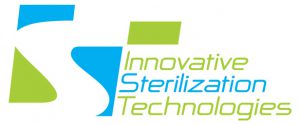When loaner trays of medical equipment first arrive at a hospital, their level of cleanliness is simply the luck of the draw.
“The same challenges with loaner equipment have persisted for years,” says Bob Marrs, who spent nine years with a surgical instrument supplier, in various educational and consulting roles, and previously worked in perioperative care for 21 years.
“You can go in and see loaner instruments that come down that are just literally caked with bio burden and body parts and bone and everything that you can imagine,” Marrs says in a recent Beyond Clean podcast. “And as we know, the cleaning aspect of the instrumentation is the most important thing. We know that if instruments aren’t clean, you can’t get them sterile, and when they come down like that, it automatically extends the time that it takes the sterile processing staff to prepare those instruments to get them through.”
As Marrs has traveled the country, he found that most healthcare facilities don’t have a strong policy in place regarding such equipment.
“Without that policy, it makes it very difficult to hold folks accountable to make sure that everybody is on the same page,” he says. “Whenever you create this policy and procedure, you want to make sure you’re developing a partnership between the operating room, between sterile processing, maybe your purchasing Department and also your sales representatives, because everybody really has to work together collaboratively to make sure that this whole system functions properly.”
The biggest obstacle to following instructions for use and for properly cleaning and decontaminating these devices is the limited time between cases, starting from when the vendors bring the devices into the facility, Marrs says.
Instead of planning ahead for a future day, multiple trays often arrive on the day of surgery. Instituting policies where trays are not accepted for use the same day starts to get at the problem, Marrs says.
He described an all-too-familiar situation where a sales rep claims that devices brought from another facility already are clean and don’t need to go through the washer. “And we all know that’s just not the case,” he says. “Couple that with the vendor instructions that call for extended cycle times, and casual approaches to cleaning are simply unacceptable.”
“Consistency in cleaning every piece of equipment is fundamental, whether it is a loaner or belongs to the hospital. It’s our responsibility, and our position should be to provide every patient that walks through our doors with the same standard of care when it comes to cleaning, disinfection, decontamination, sterilization, storage and use of these instruments,” he says.
Stay engaged on trending topics in the healthcare space and have access to articles, exciting news, and educational content by subscribing to our Blog!
If you would like FREE Online Continuing Education Credits (CE’s) visit our CE Page!
ONE TRAY® and EZ-TRAX™- Efficient, Effective, Economical
Follow us on Facebook or connect with us on LinkedIn. You can also join our ONE TRAY® Questions Page on Facebookor LinkedIn where you can ask any questions you have, any time of day, and get answers from industry experts.

